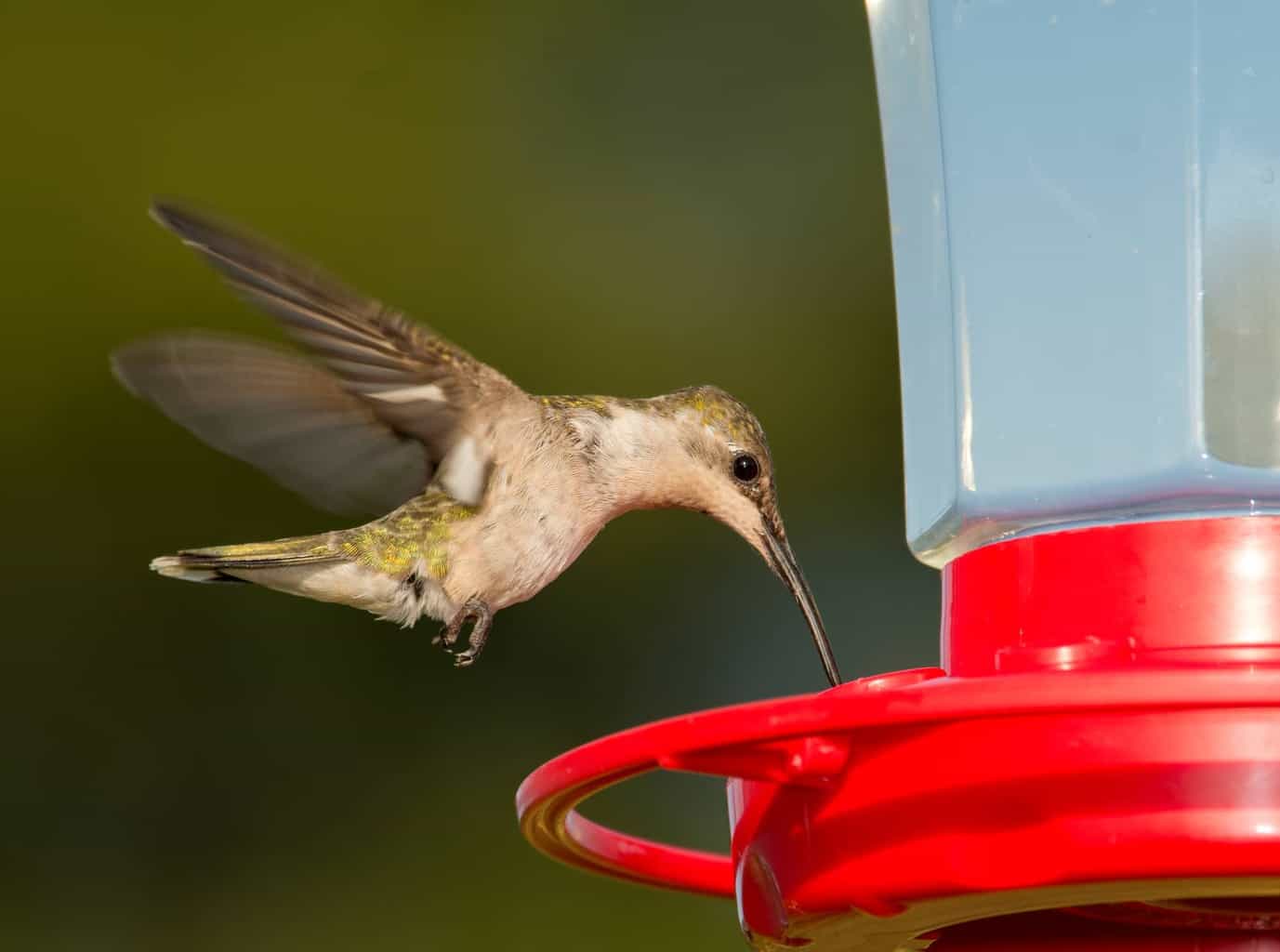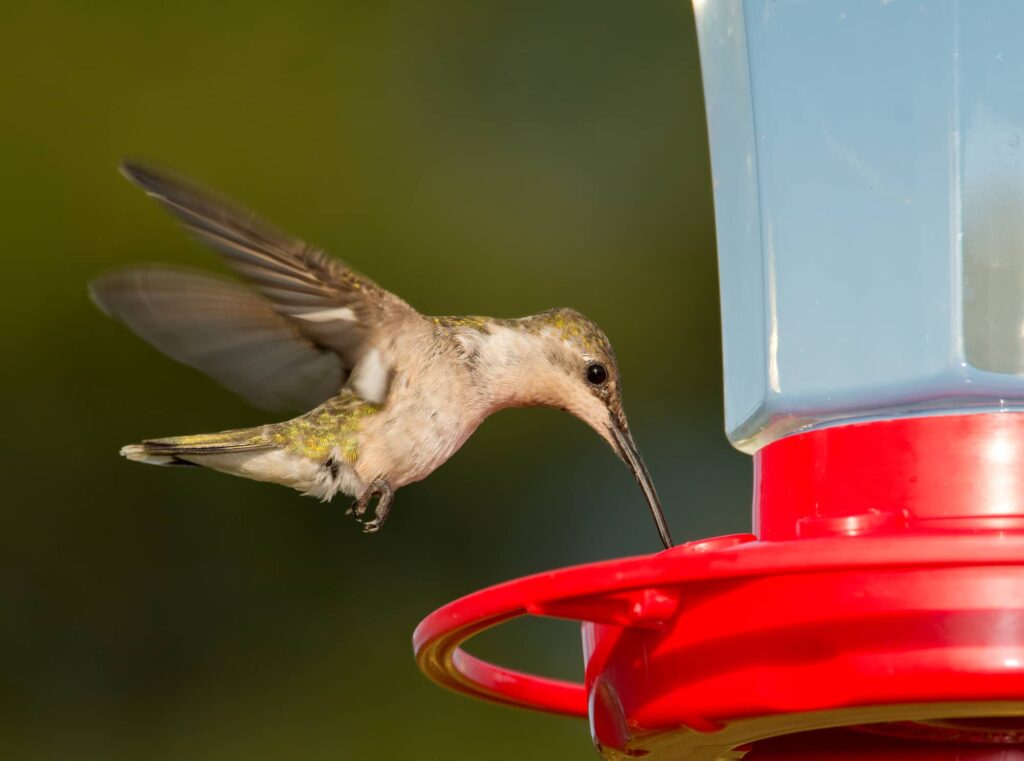Virginia is primarily shaped by the Blue Ridge Mountains and the Chesapeake Bay, both areas which provide a wide range of birdwatching opportunities. Spotting the arrival of hummingbirds each year in Virginia is one of the delights for those who love the natural world – just one of many reasons why this is a great state for nature lovers.
Ruby-throated hummingbirds sometimes arrive in April, but usually in May, heralding the arrival of the warm spring days. Some will soon leave to head further north, but some will remain to nest and breed in the state. Those that remain will usually depart in late summer or during the main fall migration in September through mid-October. Some Rufous hummingbirds and other species may occasionally be seen in winter.
Learning more about the migration of hummingbirds is one of the ways to enhance the delights of the different seasons. You can also help protect these birds and attract them to your Virginia garden. Read on to learn a little more about hummingbirds and how to welcome them in this state.
What Hummingbirds are Seen in Virginia?
Ruby-throated hummingbirds are by far the most common hummingbirds seen in Virginia. But Rufous hummingbirds may sometimes drift this far north in winter, and some other species are occasional vagrant visitors.
These rarer sightings include Rivoli’s hummingbirds, Black-chinned hummingbirds, Caliope hummingbirds, Allen’s hummingbirds, and Anna’s hummingbirds. However, you are far less likely to see these birds in the state.

When Do Hummingbirds Arrive in Virginia?
During the spring migration of hummingbirds, Ruby-throated hummingbirds can arrive in the state starting in April. However, most will turn up in May.
The timing of this migration can vary a little from year to year, depending on the weather and conditions. Warm springs may bring them just a little earlier, while colder springs may set the migration back a little. However, hummingbirds’ schedules will vary only a little from one year to the next.
Remember, however, that not all hummingbirds will arrive at once. Each bird migrates independently according to its schedule so that the flock, as it were, won’t arrive en masse.
The male and female hummingbirds also arrive at different times. Typically, the males will arrive a couple of weeks before the females and will spend some time establishing territories before the breeding season begins around June.
In September and October, during the fall migration, the number of birds will increase in Virginia as the hummingbirds that traveled further north arrive in Virginia once more on their long journeys south.
Preparing for the Arrival of Hummingbirds in Virginia
Making sure that you are ready for the arrival of hummingbirds in Virginia in spring is not just about placing feeders (though that can be part of the picture).
Even if you do not have your own garden, you might prepare for their arrival by planning spring day trips to some of the natural destinations across the state where hummingbirds might be seen. There are a great many wonderful spring day trip options.
If you have your own property, however, there is a lot more that you could do. You can make sure you have a truly hummingbird-friendly garden.
How to Attract Hummingbirds to a Virginia Garden
Hummingbirds need nectar and insects to eat. Carefully choosing your plants can mean that your garden naturally provides them with those things. Add plenty of native plants, rather than non-natives, for a wildlife-friendly scheme that will benefit you and the natural world around you.
However, providing a meal for hummingbirds is just one of the essential things a hummingbird-friendly garden should do. Plant plenty of trees and shrubs and create lots of dense, layered planting schemes to provide hummingbirds with places to perch, shelter, shade, and potentially even nest.
Hummingbirds generally get the water they need through nectar. But you should include water in your garden, so they have a place to bathe, and to help them feel comfortable and at home.
Of course, you should also make sure that you always garden organically and avoid all items that might threaten the hummingbirds visiting or spending their summers in your garden.
When Should I Put Out Hummingbird Feeders in Virginia?
You should typically place hummingbird feeders out a couple of weeks before you expect the first migrating hummingbirds to arrive. In Virginia, this typically means placing them out from the beginning to the middle of April.
However, to cater to those left behind after fall migration and for occasional winter visitors, you might consider leaving your feeders up year-round.
Just remember that placing feeders is just one step to take. It is also very important to take other steps to make sure that your garden is perfect for hummingbirds and humans.
When Do Hummingbirds Leave Virginia?
Some hummingbirds on spring migration will only pass through Virginia en route to nesting sites to the north. These birds will usually have completed their passage and left the state by the end of May.
Those Ruby-throated hummingbirds that do stay in Virginia over the summer months will breed and nest here. By July, a brood will often hatch, and soon after that, the first hummingbirds may begin to leave on their southwards migration.
The first to leave, like the first to arrive, are male. These males leave the females who will rear the young then follow with them later. Most of the hummingbirds that stayed in the state over the summer, along with those passing back through from the north, will fly southward through September and October.
By mid-October, most hummingbirds will have left for their wintering grounds in Mexico or Central America.
However, it is worth noting that some hummingbirds may remain in Virginia over the winter. Some Ruby-throated hummingbirds may have been too old or infirm to make the long journey south. Rufous hummingbirds may also drift this far north in winter.
When Should I Take Down Hummingbird Feeders in Virginia?
Typically, experts advise that you leave hummingbird feeders in place until a couple of weeks after you last observed a hummingbird in your garden. In Virginia, this might often be around the beginning of November.
However, you may have winter visitors in some southern parts of the state. If you do, this is a good reason to consider leaving up your hummingbird feeders year-round.
The more you do to provide for hummingbirds in your garden, the more likely you are to be able to see these amazing birds up close. So make sure you are ready for their arrival each year or occasionally to enjoy their presence on your property year-round.

